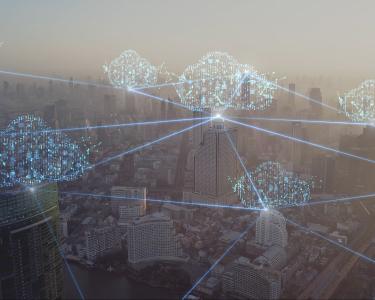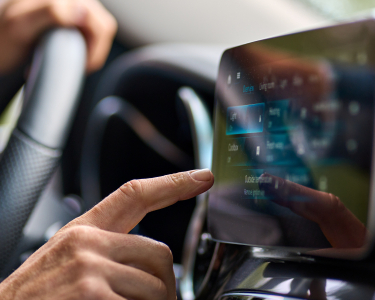Smart Workspaces: How Automation is Reshaping IT Support and Employee Experience

The modern digital environment is evolving rapidly. Smart workspaces are changing current enterprise operations, redefining employee experiences, attracting top talent, transforming IT support, and driving organizational growth. According to an analytics firm, the market is projected to hit $133.02 bn by 2032 from $50.95 bn in 2024, reflecting a CAGR of 14.2%.
In this transformation, Tech Mahindra’s Flex Digital Workplace Services (DWP) offerings leverage automation and intelligent systems to streamline daily operations, empower employees, and create a more responsive workplace.
Powering Workspace Transformation
Smart workspaces integrate advanced digital workplace tools, sensors for issue detection, and automated service processes to prevent disruptions before they impact productivity. Modern environments adapt dynamically to workforce needs, delivering instant IT support through AI-powered platforms like Lakeside’s Systrack or Nexthink.
Workplace modernization is driven by:
- Digital transformation
- Evolving employee expectations
- Operational efficiency and automation
- Zero-trust security
They leverage the latest technologies, such as Microsoft Intune and Intel vPro chipsets for out-of-band support. AR/VR solutions, like LogMeIn Rescue Live Lens, enable remote-assisted troubleshooting.
Organizations are rapidly adopting cloud-based endpoint management services like Microsoft Intune, enabling seamless global connectivity. They prefer hybrid solutions to support real-time data exchange. Meanwhile, legacy infrastructure is getting upgraded with modern technologies. This transition enhances IT infrastructure availability and performance while reducing costs.
An offering like FlexDWP has a predictive and proactive approach, with sustainability at its core. It ensures year-over-year cost reduction through automation across digital workplace services.
Meeting Evolving End-User Expectations
Gen Z employees expect intuitive and responsive environments, on-demand support, and a personalized workspace experience. They demand device performance monitoring and immediate issue resolution to maintain optimal productivity.
In hybrid work environments, IT support teams are expected to access and resolve device issues remotely, regardless of the condition. Self-healing systems, self-help tools, and advanced machine learning algorithms enable predictive maintenance by continuously monitoring systems and detecting potential issues. This approach minimizes unplanned outages and ensures consistent employee productivity.
Technologies like Intel vPro Chipset device enhance this process by diagnosing hardware issues that don’t require physical replacements but can be fixed with BIOS-level changes or driver updates. Remote support solutions like LogMeIn Rescue with AI capabilities can address device issues swiftly. IT engineers can proactively improve the end-user experience by checking the device health score and addressing identified problems while resolving the user's reported issue.
Automation in IT Support
Smart workspaces reshape IT support by replacing traditional help desks with automated solutions to manage routine tasks with speed and accuracy. Self-service portals and chatbots now handle common issues like password resets, software updates, and network diagnostics, freeing IT professionals to focus on complex challenges.
In the FlexDWP offering, automation is plugged into every step, from hiring to retirement. Digital vending machines and integrated IT service management (ITSM) tools support IT engineers. Digital lockers can facilitate laptop replacements, with IT teams managing e-waste processes efficiently. Intune can configure the newly checked-out devices.
Enhanced Security with AI
AI-driven automation strengthens security protocols by detecting anomalies, enforcing patch management, and implementing security policies without manual delays. As a result, organizations can neutralize security threats quickly, reducing the risk of data breaches and safeguarding sensitive information. For example, Intel vPro’s Hardware Shield protects the system at the chip level, detects abnormalities, and alerts Endpoint Detection and Response (EDR) tools to act. Automating routine security tasks strengthens defense operations and frees up IT resources for strategic initiatives and long-term improvements.
A More Relaxed Work Environment/ Comfort and Productivity: The Smart Workspace Advantage
Smart workspaces redefine physical offices by automating systems that manage room bookings, adjust environmental controls, and streamline resource scheduling. These improvements enhance collaboration and build a more inviting office culture, where employees feel technically and physically supported.
The evolution of smart workspaces is an ongoing process. As AI and ML advance, automation capabilities will get more sophisticated. Future systems will offer context-aware support that adapts to changing employee needs, further blurring the lines between physical and digital spaces.
Enhanced data-driven insights will provide a deeper understanding of system performance and employee behavior, driving continuous improvements across the organization. Ultimately, smart workspaces represent a significant leap forward in business operations, offering a dynamic and efficient vision.
Conclusion
The impact of automation in smart workspaces is, undoubtedly, profound and far-reaching. By reshaping IT support and enhancing the employee experience, automation sets the stage for a new era of work—one that is agile, efficient, and highly personalized. While challenges remain, continued technological integration promises a smarter, more human-centric future, giving organizations a competitive edge.

With over 22 years of experience, he has experience in most infrastructure domains and a curiosity to learn new technologies. His passion is to identify digital solutions while improving the end-user experience in enterprises. He holds a master’s degree in project management from Alagappa University.








